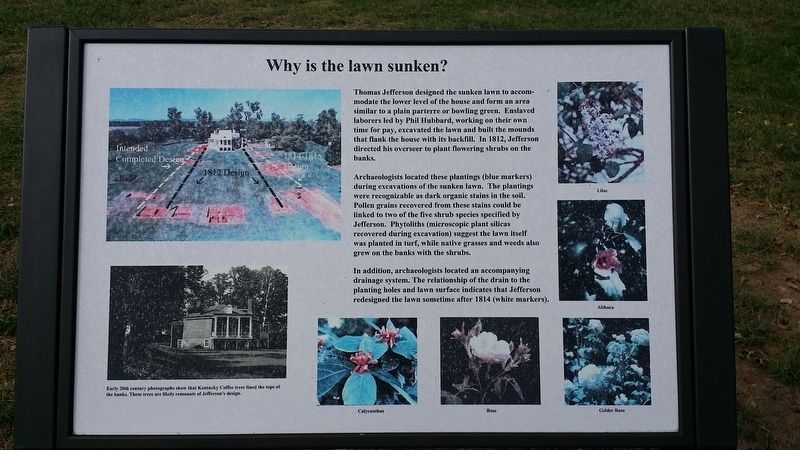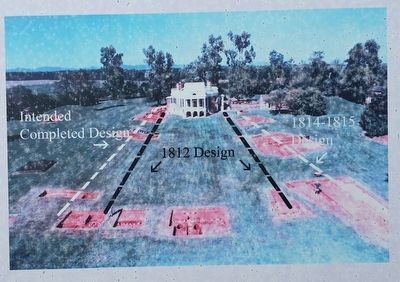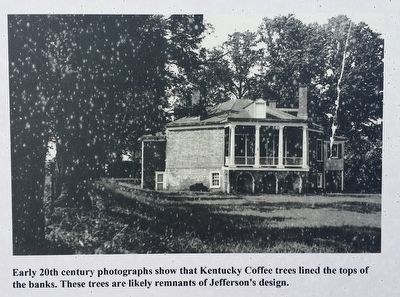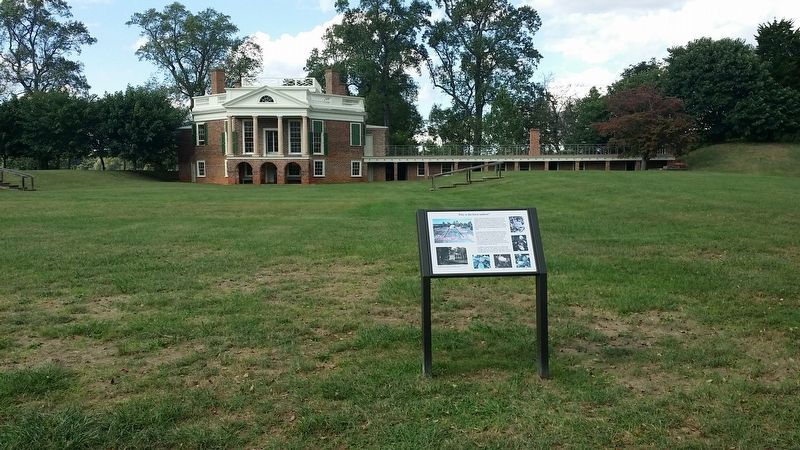Near Forest in Bedford County, Virginia — The American South (Mid-Atlantic)
Why is the lawn sunken?
Archaeologists located these plantings (blue markers) during excavations of the sunken lawn. The plantings were recognizable as dark organic stains in the soil. Pollen grains recovered from these stains could be linked to two of the five shrub species specified by Jefferson. Phytoliths (microscopic plant silicas recovered during excavation) suggest the lawn itself was planted in turf, while native grasses and weeds also grew on the banks with the shrubs.
In addition, archaeologists located an accompanying drainage system. The relationship of the drain to the planting holes and lawn surface indicates that Jefferson redesigned the lawn sometime after 1814 (white markers).
Topics and series. This historical marker is listed in these topic lists: Architecture • Horticulture & Forestry • Patriots & Patriotism. In addition, it is included in the Former U.S. Presidents: #03 Thomas Jefferson series list. A significant historical year for this entry is 1805.
Location. This marker has been replaced by another marker nearby. It was located near 37° 20.842′ N, 79° 15.861′ W. Marker was near Forest, Virginia, in Bedford County. Marker could be reached from Bateman Bridge Road. Located on the grounds of Thomas Jefferson's Poplar Forest. Touch for map. Marker was in this post office area: Forest VA 24551, United States of America. Touch for directions.
Other nearby markers. At least 8 other markers are within 3 miles of this location, measured as the crow flies. “I have this summer built a wing of offices...” (here, next to this marker); Crafting a Masterpiece, Longing for Home (within shouting distance of this marker); Mounds Made of Ideas and Sweat (about 300 feet away, measured in a direct line); Poplar Forest Planting Memorandum 1812 (about 300 feet away); Plantation Worker Housing (about 300 feet away); "A Culture Productive of Infinite Wretchedness” (about 400 feet away); Transforming a Plantation into a Private Retreat, 1806—1826 (about 400 feet away); St. Stephen's Church (approx. 2½ miles away). Touch for a list and map of all markers in Forest.
Related marker. Click here for another marker that is related to this marker. New Marker At This Location titled “I have this summer built a wing of offices...”.
Credits. This page was last revised on May 19, 2022. It was originally submitted on November 19, 2016, by Michael C. Wilcox of Winston-Salem, North Carolina. This page has been viewed 302 times since then and 12 times this year. Photos: 1, 2, 3, 4. submitted on November 19, 2016, by Michael C. Wilcox of Winston-Salem, North Carolina.



